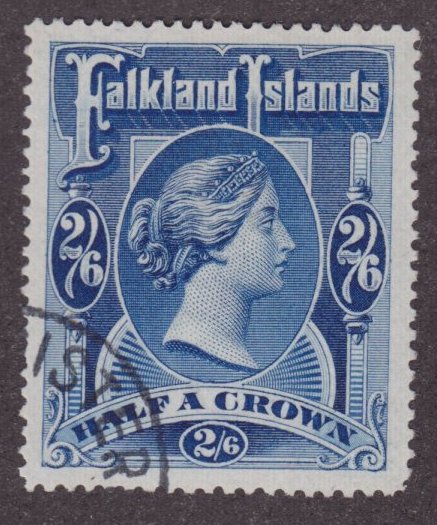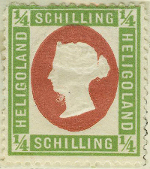
Discussion - Member to Member Sales - Research Center

Discussion - Member to Member Sales - Research Center

http://stamporama.com/discboard/disc_main.php?action=20&id=12587#91733
The second post is here.
https://stamporama.com/discboard/disc_main.php?action=20&id=12634#91906
With this third post, I am presenting the only two copies of this type I have found among the thousands of Union City cut squares. This pair is unique in that both examples present multiple matching variant characteristics. While I can easily share these with SoR members in this manner, my limited knowledge of the printing process does not allow me to explain why all of these variations exist on this pair of cut squares.
Before I list the variations, I want to point out another very important aspect of this pair. Both appear to have been postmarked at Geneva, Illinois, in 1893. I am basing this on my interpretation of the partial circular date stamps. Geneva is the county seat of Kent County; the 1890 population was 1,692. I assume the stationery envelopes were sold by the box and I think it is high likely both cut squares came from the same box. However, I do not know if these two envelopes would have been sold separately by the local post office or if a business in Geneva had purchased them in bulk because of the volume of business they were doing outside the community.
That is the extent of my knowledge. Someone else will need to explain how the printing process would have created these oddities. If nothing else, this pair demonstrates how difficult it was to maintain production quality control with the technology employed back then.
I have created a close-up JPG highlighting the most prominent characteristics that I am listing below, from top to bottom on the cut squares.
1. The scratch and separate white spot left of the "E" in STATES (and the white dot between the "A" and "T")
2. The distinctive white spot at the tip of Washington's nose
3. The scratch extending from the inner toothed frame line near the chin
4. A cap on the "C" in CENTS
5. A small white nub inside the shield at the lower right-hand corner
I have a third copy that is missing the white spot at the tip of the nose, but has the other characteristics. It appears to have originated from a different post office, possibly Mansfield, Ohio.




Login to Like
this post
Here is a second pair of matched cut squares from the Union City, Indiana, hoard. The paper is amber manila. It is a relatively thin paper and not exactly high quality. The Scott catalog number is 317 and it is United Postal Stationery Society Die 88.
Both of these examples were postmarked in Pittsburgh, Pennsylvania. Both have a circular date stamp and an ellipse obliterator with the numeral “7” in the center. In addition, both display the same die variety—the small inward pointing spur, or dash, on the outer ribbon line above the “ST” of POSTAGE. And, last but not least, each of these cut squares shows a tiny portion of the addressee’s handwritten name in the lower left-hand corner. The ink on both appears to be the same shade of purple, indicating the cut squares probably came from the same source in Pittsburgh.
In 1955, H. S. Dickinson published an article containing a list of 29 “die varieties” for the 2c green George Washington indicium. His list actually consisted of both inking and die varieties, but his B-10 variety identified this dash above the “ST” of POSTAGE. Among the 11-12,000 Union City cut squares in my possession, I have found 32 with this dash. Of these, 15 also have a white spot above the left leg of the letter “N” in CENTS. These two copies have that white spot, but it is less distinct in these examples than usual. Mr. Dickinson didn’t identify that white spot as one of his varieties, either separately or in conjunction with the spur.
One significant characteristic differentiates these cut squares. The third bar at the bottom of the ellipse on the second example is missing and the other two bottom bars are shortened on the right. This was probably just an inking issue. To check this, I used Photoshop to overlay and compare the two ellipses. By using the copy with missing ink as the base and overlaying the fully inked ellipse on top, I can show an excellent match except for that lower left-hand and bottom area. The color of the fully inked top layer was changed to red and then adjusted so it is semi-transparent to allow the bottom image to show through. The areas with missing ink on the base copy appear as orange.
Thomas Galloway has been working on a Die Variety listing for the Die 88 indicium. His assigned number for this variety is 88vT27. In addition to the dash and the white spot, his variety description includes the extended bottom ray of the right side ornament (below POSTAGE). My two examples include this extended ray.
As Tom (BenFranklin1902) pointed out a couple of years ago in a related discussion here,
https://stamporama.com/discboard/disc_main.php?action=20&id=16659#135678
(the system is refusing to properly format the link) can any of us begin to imagine all those thousands of covers being intact today? Altogether, there were more than 20,000 cut squares and off-paper stamps, mostly from the early 1890s and many from smaller cities and towns. The bulk of the material was common, but the postal history information was not. Regardless, this has been an amazing journey. I can barely imagine what it would have been like having all of those additional circular date stamps, full obliterator images, and addressees to research.





1 Member
likes this post.
Login to Like.

This is the long overdue entry #3 in my attempt to share what I am finding while sorting through over 11,000 Scott U311-U314/United Postal Stationery Society (UPSS) Die 88 cut squares. My first post in this series showed a clear frame break and included some general background information about this massive collection that had been gathered at Union City, Indiana. You can find it here.
http://stamporama.com/discboard/disc_main.php?action=20&id=12587#91733
The second post is here.
https://stamporama.com/discboard/disc_main.php?action=20&id=12634#91906
With this third post, I am presenting the only two copies of this type I have found among the thousands of Union City cut squares. This pair is unique in that both examples present multiple matching variant characteristics. While I can easily share these with SoR members in this manner, my limited knowledge of the printing process does not allow me to explain why all of these variations exist on this pair of cut squares.
Before I list the variations, I want to point out another very important aspect of this pair. Both appear to have been postmarked at Geneva, Illinois, in 1893. I am basing this on my interpretation of the partial circular date stamps. Geneva is the county seat of Kent County; the 1890 population was 1,692. I assume the stationery envelopes were sold by the box and I think it is high likely both cut squares came from the same box. However, I do not know if these two envelopes would have been sold separately by the local post office or if a business in Geneva had purchased them in bulk because of the volume of business they were doing outside the community.
That is the extent of my knowledge. Someone else will need to explain how the printing process would have created these oddities. If nothing else, this pair demonstrates how difficult it was to maintain production quality control with the technology employed back then.
I have created a close-up JPG highlighting the most prominent characteristics that I am listing below, from top to bottom on the cut squares.
1. The scratch and separate white spot left of the "E" in STATES (and the white dot between the "A" and "T")
2. The distinctive white spot at the tip of Washington's nose
3. The scratch extending from the inner toothed frame line near the chin
4. A cap on the "C" in CENTS
5. A small white nub inside the shield at the lower right-hand corner
I have a third copy that is missing the white spot at the tip of the nose, but has the other characteristics. It appears to have originated from a different post office, possibly Mansfield, Ohio.




Login to Like
this post

re: 2c Washington 1890s Plimpton & Morgan / Purcell varieties, printing problems, plate flaws, etc. #3
Here is a second pair of matched cut squares from the Union City, Indiana, hoard. The paper is amber manila. It is a relatively thin paper and not exactly high quality. The Scott catalog number is 317 and it is United Postal Stationery Society Die 88.
Both of these examples were postmarked in Pittsburgh, Pennsylvania. Both have a circular date stamp and an ellipse obliterator with the numeral “7” in the center. In addition, both display the same die variety—the small inward pointing spur, or dash, on the outer ribbon line above the “ST” of POSTAGE. And, last but not least, each of these cut squares shows a tiny portion of the addressee’s handwritten name in the lower left-hand corner. The ink on both appears to be the same shade of purple, indicating the cut squares probably came from the same source in Pittsburgh.
In 1955, H. S. Dickinson published an article containing a list of 29 “die varieties” for the 2c green George Washington indicium. His list actually consisted of both inking and die varieties, but his B-10 variety identified this dash above the “ST” of POSTAGE. Among the 11-12,000 Union City cut squares in my possession, I have found 32 with this dash. Of these, 15 also have a white spot above the left leg of the letter “N” in CENTS. These two copies have that white spot, but it is less distinct in these examples than usual. Mr. Dickinson didn’t identify that white spot as one of his varieties, either separately or in conjunction with the spur.
One significant characteristic differentiates these cut squares. The third bar at the bottom of the ellipse on the second example is missing and the other two bottom bars are shortened on the right. This was probably just an inking issue. To check this, I used Photoshop to overlay and compare the two ellipses. By using the copy with missing ink as the base and overlaying the fully inked ellipse on top, I can show an excellent match except for that lower left-hand and bottom area. The color of the fully inked top layer was changed to red and then adjusted so it is semi-transparent to allow the bottom image to show through. The areas with missing ink on the base copy appear as orange.
Thomas Galloway has been working on a Die Variety listing for the Die 88 indicium. His assigned number for this variety is 88vT27. In addition to the dash and the white spot, his variety description includes the extended bottom ray of the right side ornament (below POSTAGE). My two examples include this extended ray.
As Tom (BenFranklin1902) pointed out a couple of years ago in a related discussion here,
https://stamporama.com/discboard/disc_main.php?action=20&id=16659#135678
(the system is refusing to properly format the link) can any of us begin to imagine all those thousands of covers being intact today? Altogether, there were more than 20,000 cut squares and off-paper stamps, mostly from the early 1890s and many from smaller cities and towns. The bulk of the material was common, but the postal history information was not. Regardless, this has been an amazing journey. I can barely imagine what it would have been like having all of those additional circular date stamps, full obliterator images, and addressees to research.





1 Member
likes this post.
Login to Like.

